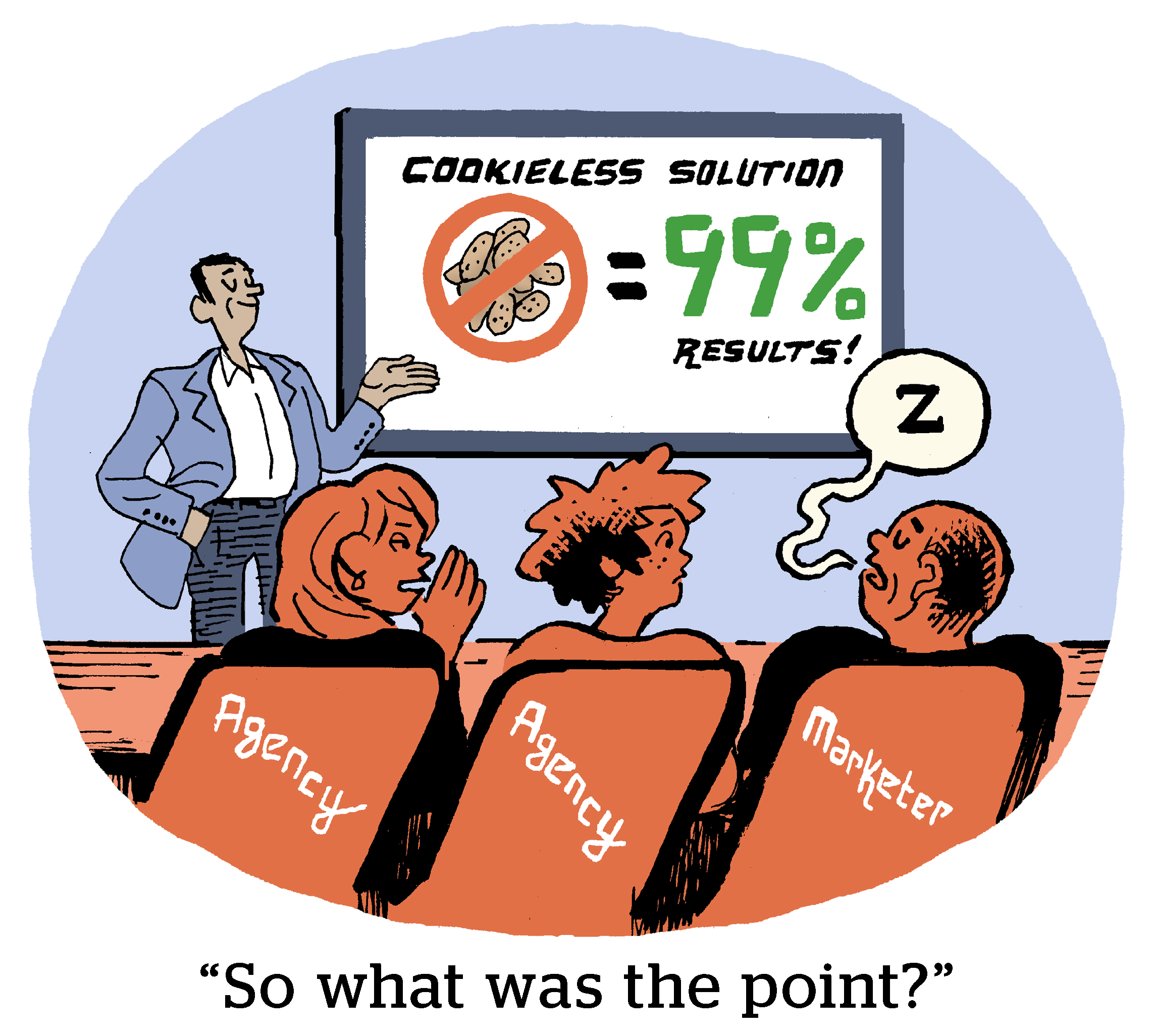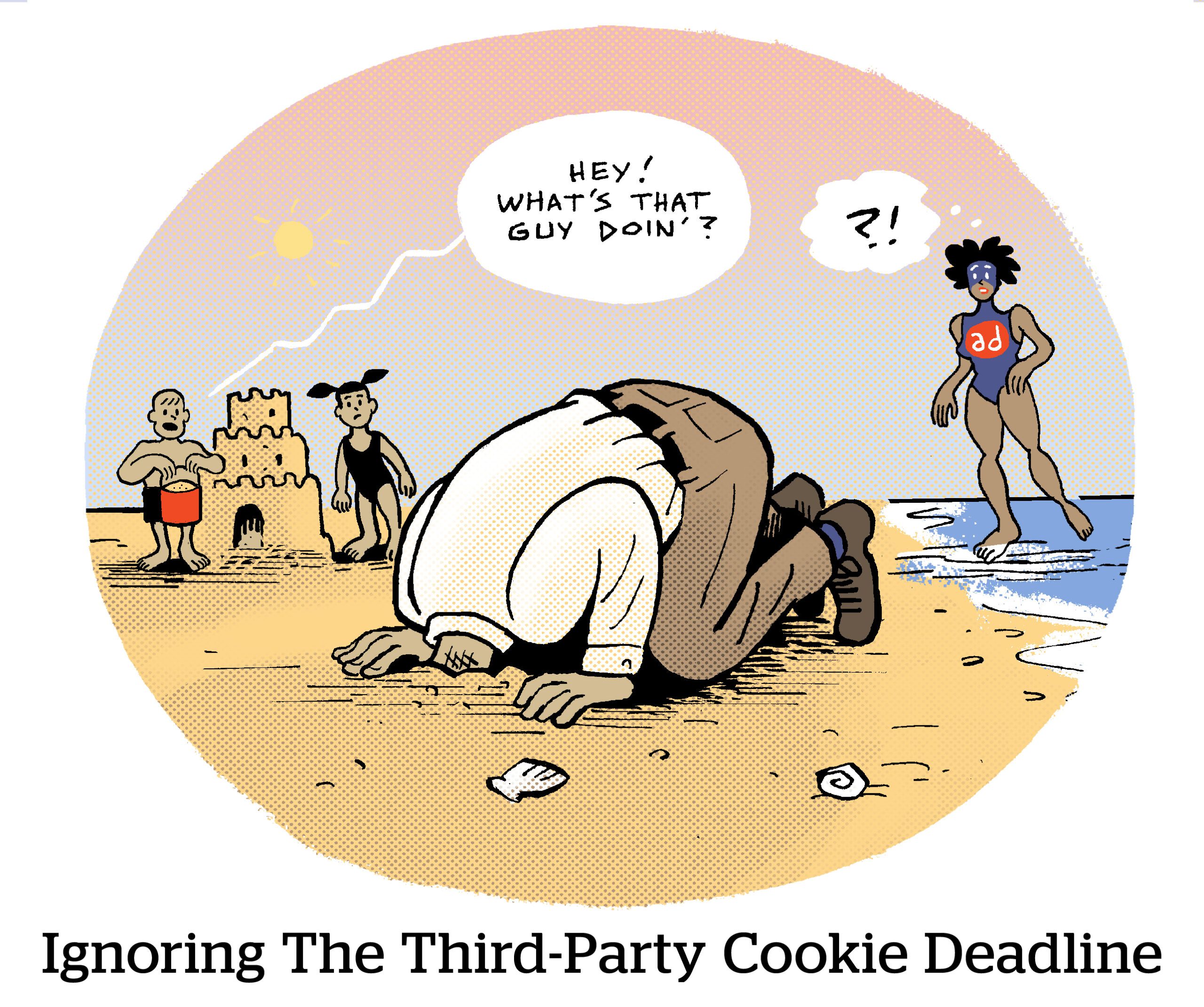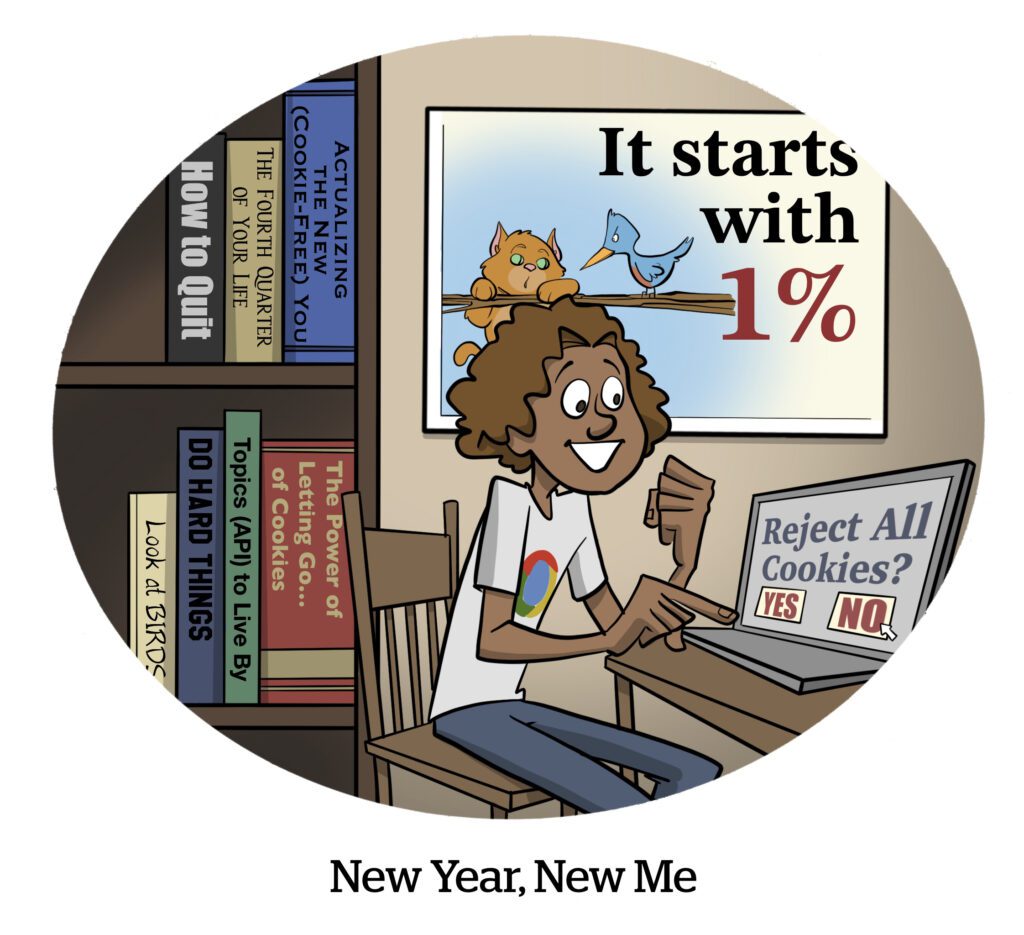Google phased out third-party cookies for 1% of Chrome traffic all of two weeks ago.
So, is everything different yet?
Some early results are trickling in, with publisher ad network Raptive reporting findings from week-one test campaigns of the 1% cookieless audience.
But these early results should be taken with a grain of salt.
Raptive and others aren’t convinced the insights gleaned from Chrome’s current state, with some 30 million users sans cookies, will reflect the final state of targeted advertising on the web. So drawing conclusions about market dynamics would be premature, to say the least.
Still, the tests help publishers and ad tech partners get a handle on how the Privacy Sandbox APIs will work in practice, Raptive Chief Strategy Officer Paul Bannister told AdExchanger. And early findings illustrate gaps in the Sandbox’s end-to-end campaign infrastructure to be potentially adjusted by the Privacy Sandbox working groups.
Raptive’s results
The results Bannister shared were from a test Raptive conducted between Jan. 4 and 7 using Chrome’s cookieless test group. According to those results, cookieless test audiences attracted 30% lower CPMs on average compared to cookie holders.
While lower CPMs aren’t exactly a good trend for publishers, the test results were encouraging compared to the CPMs that advertisers pay for audiences on Apple’s Safari browser, which blocks third-party cookies by default. Safari audiences attract 60% lower CPMs on average compared to cookied Chrome traffic, according to Raptive.
Publishers are worried that Safari’s lower CPMs will become the norm on Chrome, too, in the absence of targeting signals. So a 30% drop in CPMs is preferable to a 60% drop.
But not every publisher is encouraged by Raptive’s early findings – or even interested (yet).
“It’s a bad idea to start drawing conclusions from that 1%,” said Jonathan Roberts, chief innovation officer at Dotdash Meredith.
As it stands, the programmatic ecosystem is built around the assumption that Chrome still has third-party cookies available for targeting, Roberts said. That means algorithms are biased toward buying on Chrome, which could make its numbers seem better when compared to other browsers.
Once advertiser algorithms have adapted to cookies disappearing on all the browsers, Roberts said, it will render any early findings moot.
In other words, that 30% CPM drop is likely to change as Chrome phases out cookies for a larger percentage of users – perhaps for the worse, perhaps for the better.
Bannister is optimistic the cookieless monetization gap will be filled and CPMs will rise over the coming year.
How will that happen?
The programmatic ecosystem could adopt the Privacy Sandbox APIs more widely, which would make the APIs more efficient, he said. Currently, only three of the roughly 30 SSPs Raptive integrates with can support the Protected Audiences targeting API, alongside only four DSPs.
Alternative IDs’ impact on cookieless monetization
By adopting alternative ad IDs, marketers could grow more sophisticated over time and close the gap through efficiency gains, Bannister said. He believes a reason for Chrome’s higher CPMs for cookieless traffic is that alternative ID stacks perform better on Chrome than on Safari.
The impact of alternative IDs could also explain why Prebid demand seems to be winning Chrome auctions at a higher rate than Google demand, Bannister said. Google demand tends to be all-in on Privacy Sandbox solutions. But demand filtered through Prebid benefits from collective efforts of SSPs to implement a wide array of cookie alternatives.
Understanding why alternative IDs perform better on Chrome – and which IDs outperform others – is a major focus of Raptive’s ongoing Privacy Sandbox testing, Bannister said.
Higher user opt-in rates for data sharing on Chrome could explain why alternative IDs work better, but that probably isn’t the entire picture, he added.
Raptive’s take on the early results is closer to tentative optimism than unhinged ambition. But it’s a rosier outlook than some.
It is just as plausible that Chrome CPMs will drop further as cookies are phased out beyond the initial 1%, said Andrew Casale, CEO of SSP Index Exchange.
In its early testing, Index noticed the same 30% differential, Casale said, which is much better than the roughly 56% lower CPMs the SSP had forecasted. Index also believes that the better-than-expected CPMs can be explained by alternative IDs – namely, probabilistic IDs – doing their job.
But the 30% differential between cookied and cookieless Chrome users is probably a best-case scenario, Casale said. And it’s likely that, as Google grows the cookieless audience, the performance of probabilistic IDs will suffer because they’ll have less access to cookied audiences for their own identity graphs and cross-site data modeling.
Time to test
The industry consensus is that early results gleaned from the initial 1% cookieless testing are not useful for forecasting what CPMs will be one year from now, let alone years.
So, rather than trying to figure out how deals might play out, buyers and sellers should focus their testing efforts on whether Google’s cookie alternatives actually work for end-to-end campaigns.
For its part, Dotdash Meredith has been testing Privacy Sandbox tools since last summer, Roberts said. But it hasn’t run end-to-end tests because not all its partners integrate the Chrome APIs, though it plans to start this quarter.
“Q1 is not just about wiring it all up, but also about finding where it is broken so the Chrome team can fix and build the things that are needed,” Roberts said.
Index has also held several meetings between DSPs, buyers and publishers about testing the Protected Audiences API in the next few months, according to Casale. “Those case studies will hopefully compel others to jump on the train before we run out of time.”
Laying the groundwork for end-to-end testing is where the focus should currently be, Casale said, rather than running a victory lap because the first results weren’t poison.
“The 30% dip doesn’t seem as bad as everyone thought, so maybe everything will be fine,” he said. “But that is too optimistic, and won’t be helpful come July.”














